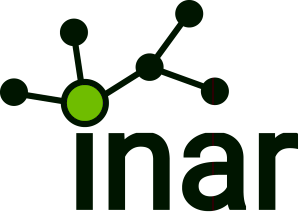A life without surfactants? It might be possible, but it would be quite dirty and greasy. Surfactants are among the most important and most frequently used chemicals because they can mix water and oil, form foam, and dissolve dirt. The latest market report by Ceresana shows that surfactants are currently sold worldwide for more than USD 49 billion per year. For these cleansing and surface-active substances, the market study forecasts further sales growth of 3.6% per year on average until 2033. The Asia-Pacific region is by far the largest consumer with more than a third of the world market share.
Surfactants Market Shows Variety of Applications
Surfactants are used in numerous market segments. Washing powder and liquid detergents for households consist to a large extent of surfactants and are their most important area of application, currently accounting for around 55% of total demand for surfactants. Demand in this application area is only expected to increase relatively slightly. Ceresana anticipates high growth rates for cosmetics and personal care products, such as toothpaste, disinfectants, and contraceptives. However, the market study forecasts the largest surfactants market size increase of around 2.8% per year for surfactant consumption by manufacturers of plastics, paints, and coatings. Surfactants are also required in numerous other areas of application, such as cooling lubricants in the metal industry, auxiliaries in the textile and leather industry, or wetting agents in agricultural chemistry. Furthermore, surfactants contribute to the fluidity of printing ink and later enable the ink to detach from the fibers during paper recycling. They can be found in construction chemicals as well as in fire-fighting foams or in flotation chemicals for ore processing and oil extraction.
Surfactant Types and Their Market Potential
A surfactant molecule looks like a match or a pin: The hydrophilic head gets immersed in water – the pointed lipophilic end binds with fat, for example with dirt particles. Surfactants are primarily produced from crude oil, but increasingly also from bio-based raw materials such as sugar, vegetable oils, or vegetable soaps. A distinction is made between anionic, cationic, and non-ionic surfactants according to their electrical charge. The new market analysis by Ceresana provides important key figures on production, demand, import and export, but also on individual types of surfactants. Anionic surfactants have a global market share of just under 49% and are therefore currently the most important type. These include linear alkylbenzene sulfonates (LAS) in particular, which foam strongly and have a high washing power, but are not completely biodegradable and are therefore increasingly facing more environmentally friendly competition.
Current Fourth Edition of the Ceresana Market Study on Surfactants:
Chapter 1 of the new study by Ceresana provides a comprehensive analysis of the global surfactant market – including forecasts up to 2033: The development of demand and revenues is explained for each of the following regions: Western and Eastern Europe, North and South America, Asia-Pacific, the Middle East, and Africa. The demand for surfactants is also broken down for the individual application areas. In addition, demand, production, and revenues are broken down by product types. Anionic, cationic, non-ionic, and other types are considered individually. Moreover, the group of anionic products is further subdivided into alkylbenzene sulfonates (LAS), alkyl sulfates / alkyl ether sulfates / alcohol ethoxy sulfates (FAS/FAES/AES), and other anionic surfactants. The non-ionic group is subdivided into fatty alcohol ethoxylates (FAEO), other ethoxylates, and other non-ionic surfactants (e.g. pure fatty alcohols, alkyl polyglycosides).
In Chapter 2, the market is analyzed individually for 42 countries. The demand for and revenues generated with surfactants are shown in each case. The production of and trade are shown for the anionic, cationic, nonionic, and other surfactant groups. In addition, market demand is broken down into the various application areas: Detergents and cleaners, industrial cleaners, personal care and cosmetics, textiles and leather, paints and plastics, other applications. These product types are examined: LAS, FAS/FAES/AES, other anionic surfactants, cationic surfactants, FAEO, other ethoxylates and other surfactants.
Chapter 3 provides useful company profiles of the largest surfactant manufacturers, clearly arranged according to contact details, revenues, net income, product range, production sites, and profile summary. In-depth profiles of the 63 most important producers are supplied, for example of Air Liquide S.A., Asahi Kasei Corporation, BASF SE, China National Petroleum Corporation, The Dow Chemical Company, Evonik Industries AG, Indorama Ventures Public Company Limited, Saudi Basic Industries Corporation, Sasol Limited, and Wilmar International Limited.
Further information on the new edition of the market study “Surfactants – World”: https://ceresana.com/en/produkt/surfactants-market-report-world

About Ceresana:
As one of the world’s leading market research institutes, Ceresana specializes in the chemicals, plastics, packaging, and industrial goods sectors. Special focus areas are bio-economy and automotive / mobility. Companies have been benefiting from our high-quality industry analyses and forecasts since 2002 More than 250 market studies provide more than 10,000 customers around the world with the knowledge base for their sustainable success.
Learn more about Ceresana at www.ceresana.com
Ceresana
Mainaustrasse 34
78464 Konstanz
Germany
Phone: +49 7531 94293 10
Fax: +49 7531 94293 27
Press Contact: Martin Ebner, m.ebner@ceresana.com
